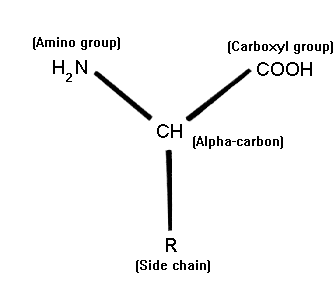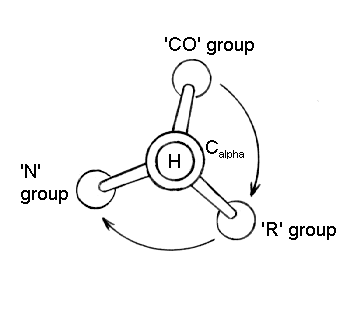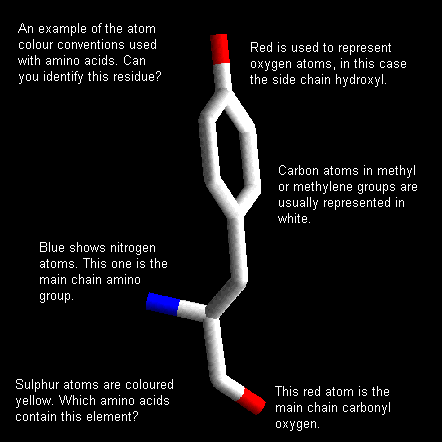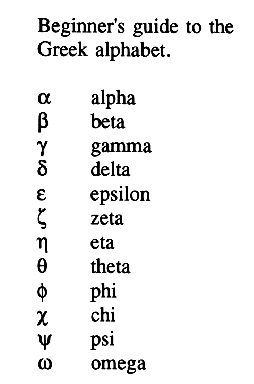

|
|
Amino Acid Structure

Acid or base hydrolysis of proteins yields amino acids of this general form. The central carbon atom is called the Calpha-atom and is a chiral centre. All amino acids found in proteins encoded by the genome have the L-configuration at this chiral centre. This configuration can be remembered as the CORN law. Imagine looking along the H-Calpha bond with H atom closest to you.

When read clockwise, the groups attached to the Calpha spell the word CORN. Amino acids in the D-configuration would say CORN anticlockwise when viewed in the same way.
There are 20 side chains in found in proteins encoded by the genetic machinery of the cell. Some are acidic, some basic, neutral, hydrophobic, etc (see Primary Structure of Proteins). The side chains confer important properties on a protein such as the ability to bind ligands and catalyse biochemical reactions. They also direct the folding of the nascent polypeptide and stabilise its final conformation.
Certain colours are used conventionally to represent the different atom types found in proteins. In this section red is used for oxygen, blue for nitrogen, white for carbon and yellow for sulphur. Hydrogen atoms cannot be located in most protein structures since they scatter X-rays too weakly. The figure below indicates atoms types by colouring each half of the chemical bonds according to the atoms involved.

In molecular graphics, atoms can be represented in different ways. For expedience molecules are often displayed only as lines or vectors between the atoms bonded together covalently. An elegant representation is the ball-and-stick type in which atoms are drawn as coloured spheres and their bonds as rod-like connections. Another useful display is the space- filling representation in which a surface is drawn around the atoms to indicate their van der Waals radi. This surface can be drawn as a series of dots or as a solid entity.
Atoms are named using letters in the Greek alphabet; a selection relating to the atom names and torsion angles used with amino acids is given below.

j.cooper 2/1/95
Last updated 4th Nov '96